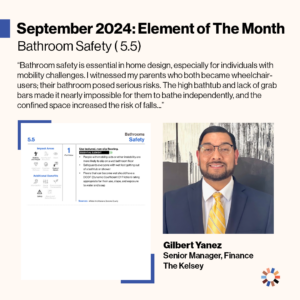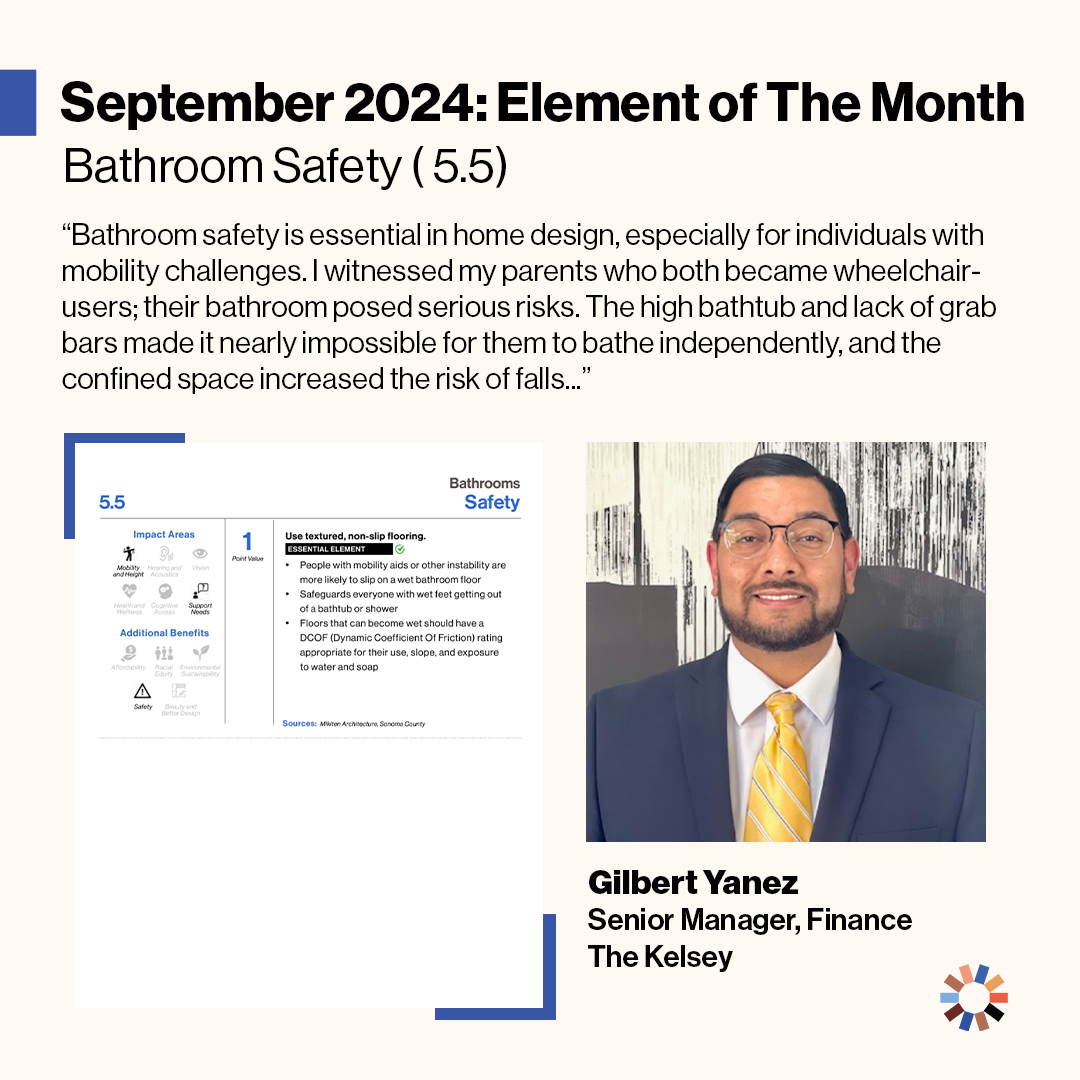The Inclusive Design Standards equip designers, builders, and developers with guidelines and frameworks for disability-forward housing creation. It highlights cross-disability accessibility and design decisions that are anchored in inclusion. Each month we feature one of our partners and the Element they’re most excited about.
Gilbert Yanez | Senior Manager, Finance | The Kelsey

This month features Gilbert Yanez, our Senior Finance Manager at The Kelsey. He brings over a decade of financial and accounting leadership to the team. Gilbert’s element of choice, Bathroom Safety, recommends non-slip flooring. This addition enhances safety for everyone exiting the shower and stepping onto a wet and slippery bathroom floor. Gilbert recalls personal experience with bathroom safety, as it relates to his parents, who were both wheelchair users. He remembers worrying about aspects of their bathroom that posed safety concerns. He sees this element as an essential consideration for bathroom safety in making sure the bathroom can be a safe space for anyone to use. Overall, Gilbert advocates for “thoughtful design” as it relates to disability-forward housing development and making spaces safer for everyone.
Name of Element: Bathroom Safety (5.5)
Description: Use textured, non-slip flooring
-
- People with mobility aids or other instability are more likely to slip on a wet bathroom floor
- Safeguards everyone with wet feet getting out of a bathtub or shower
- Floors that can become wet should have a DCOF (Dynamic Coefficient Of Friction) rating appropriate for their use, slope, and exposure to water and soap
Design Category: Dwelling Units
Impact Area(s): Mobility and Height, Support Needs
Additional Benefit(s): Safety
Why is this element important to you, personally or for the project?
Bathroom safety is essential in home design, especially for individuals with mobility challenges. I witnessed my parents who both became wheelchair-user; their bathroom posed serious risks. The high bathtub and lack of grab bars made it nearly impossible for them to bathe independently, and the confined space increased the risk of falls. These challenges demonstrate the importance of features like roll-in showers, grab bars, and non-slip floors in making bathrooms safer and more accessible. Thoughtful design can prevent accidents and help individuals maintain their independence while bathing.
How would you explain this element to a 2nd grader?
Wheelchair users often need special things in their bathroom to help them stay safe. Imagine a mom and dad who can’t walk, and they need help to get into the bathtub because it’s too tall and there’s nothing for them to hold onto. This can be really hard and even dangerous. That’s why it’s important to have things like a roll-in shower, bars they can grab onto and floors that aren’t slippery. These things help keep them safe so they can bathe without getting hurt.
What recommendations would you make to someone designing a disability-forward housing project (related to the design standards)?
-
- Accessible Bathrooms
- Wider Doorways and Hallways
- Zero-Step Entryways
- Adjustable Kitchen Features
